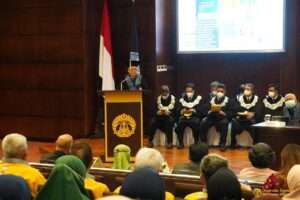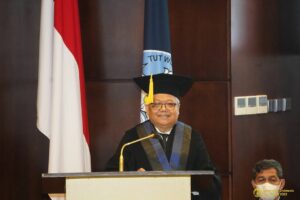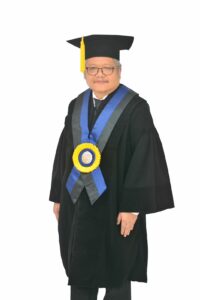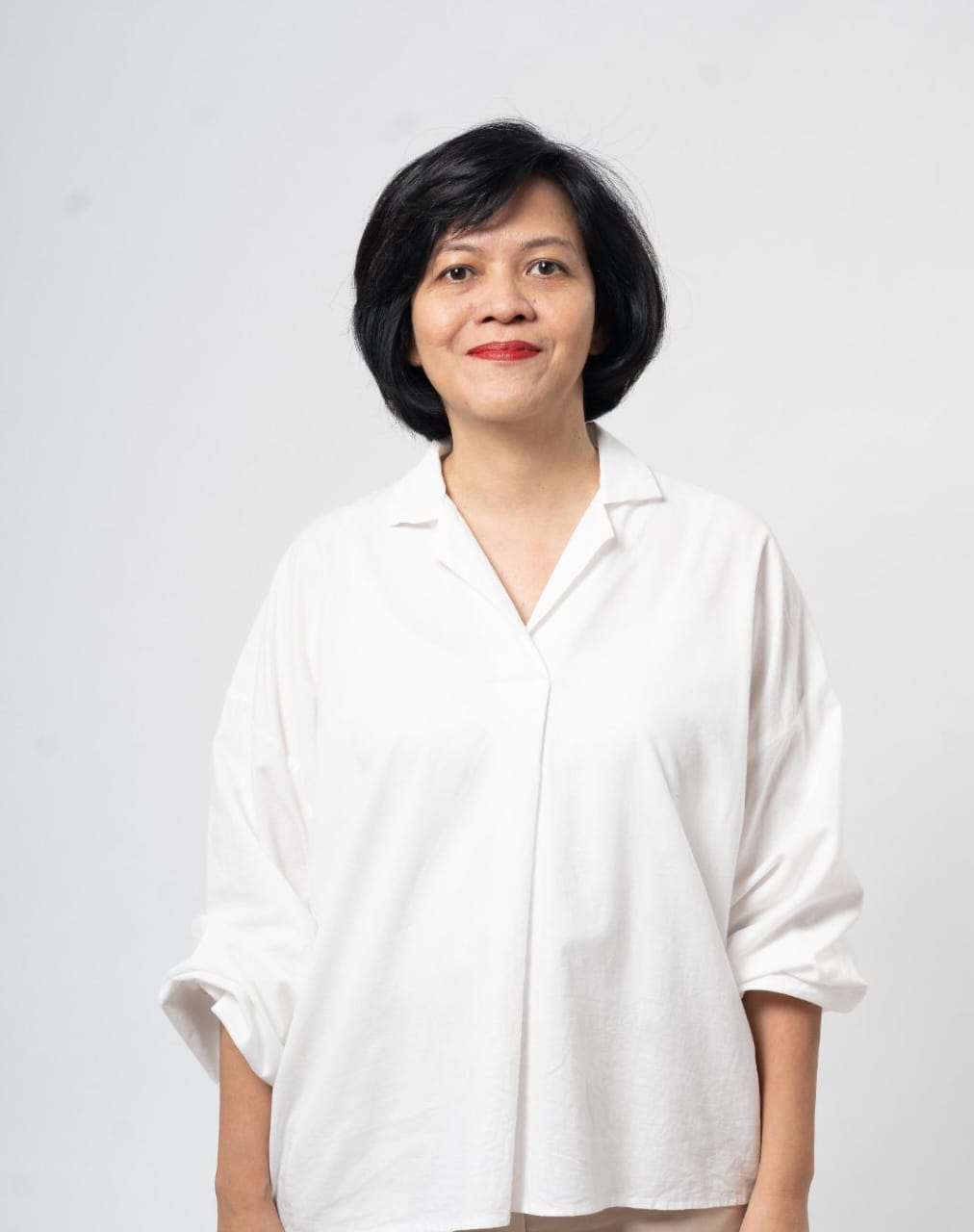
The use of fossil fuels is currently contributing to the increase of CO2 gas emissions, which results in global warming. Energy and new renewable energy sources that are eco-friendly are needed, as the substitutes for fossil fuels because it has the disadvantage of a slow carbon cycle. Meanwhile, humans use a lot of energy to meet their daily needs. As a result, oil reserves that are ready to be explored are dwindling because not all of the carbon emitted into the atmosphere has returned to petroleum deposits.
“Therefore, as a country that has rich sunlight and many minerals, Indonesia has a good position or momentum to contribute to solving this energy problem. With the help of ideas from researchers and technology, it will be very possible to produce new energy that can replace the current energy we use and overcome the problem of the carbon cycle by trying to shorten the cycle chain,” said Prof. Dr. Jarnuzi Gunlazuardi in his inaugural speech as a professor in the field of Photoelectrochemistry, the Faculty of Mathematics and Natural Sciences, Universitas Indonesia (FMIPA UI), on Wednesday (14/12).

The system, said Prof. Jarnuzi, in principle, can change (fixation) CO2 gas into methanol, or N2 gas into ammonia. Methanol and ammonia can be used as energy-producing fuels, or as precursors of other compounds that are useful for life.
“In photoelectrochemical cell systems, sometimes we encounter inefficiency problems due to over potential. To overcome this, additional external power input is needed. We propose to overcome this problem by developing a tandem system between solar cells and electrochemical cells. The solar cell used is a Gratzel type solar cell, namely Dyes Sensitize Solar Sell (DSSC), which is attached to a photoelectrochemistry (PEC) cell. Hence, the tandem system is called DSSC-PEC tandem,” he said.
He added that the DSSC-PEC tandem system or device, which was developed with the help of sunlight and aqueous electrolyte media, can convert CO2 gas into methanol, nitrogen into ammonia, as well as produce hydrogen from the breakdown of water. Hydrogen is a renewable energy that is eco-friendly and predicted to be a future fuel. Meanwhile, apart from being a fuel, methanol and ammonia are also important precursors to be converted into chemicals for industry or agriculture.
The professor inauguration ceremony was led by Rector of UI Prof. Ari Kuncoro, SE, MA, Ph.D., at Balai Sidang, UI Campus, Depok, and broadcast virtually via Youtube channel of Universitas Indonesia and UI Teve. “I thank you for your speech. This is very relevant for the energy transition, where we will undergo decarbonization. We will switch from fossil energy to new renewable energy, and the sky will be blue. I would like to congratulate you. You have been confirmed as a Tenured Professor at the Faculty of Mathematics and Natural Sciences UI,” said the Rector of UI.
The professor inauguration ceremony was attended by Vice President of Pertamina Energy Institute, PT Pertamina (Persero), Dr.rer.nat Hery Haerudin; Senior Researcher, Political Research Center (Conflict, Defense and Security), National Research and Innovation Agency (BRIN), Prof. Riset. Dr. Hermawan Sulistyo, MA; Senior Researcher, Raw Materials for Medicine and Traditional Medicine Research Center, BRIN, Prof. Riset. Dr. Muhammad Hanafi, MSc.; Senior Researcher, Chemical Research Center, BRIN, Prof. Dr. Ir. Anny Sulaswatty M.Eng; and Professor of the Faculty of Mathematics and Natural Sciences, Universitas Halu Oleo, Kendari, Prof. Dr. Muh. Nurdin, M.Sc.
Prof. Jarnuzi studied his undergraduate education at the Department of Chemistry, the Faculty of Mathematics and Natural Sciences UI. Since graduating from the undergraduate program in 1984, he started his career as a lecturer in the Department of Chemistry, FMIPA UI. Then Prof. Jarnuzi continued his master’s and doctoral studies in the field of Environmental Chemistry, at Ehime University, Matsuyama, Japan, in 1898-1993.

Until now, Prof. Jarnuzi has published 40 international journal articles and 44 international proceedings journal articles. Several of his scientific papers that have been published are Comparative Study of Bismuth Ferrite Deposition Method on TiO2 Nanotubes and Performance of Hydrogen Evolution in a Photoelectrochemical Dye-Sensitized Solar Cell Tandem System (2022); Core-shell copper-gold nanoparticles modified at the boron-doped diamond electrode for oxygen sensors (2022); Electrochemical Preparation of Highly Oriented Microporous Structure Nickel Oxide Films as Promising Electrodes in Urea Oxidation (2022); Magnetically Separable Fe3O4/SiO2/TiO2 Photocatalyst Composites Prepared through Hetero Agglomeration for the Photocatalytic Degradation of Paraquat (2021); and NickelCobalt Modified Boron-Doped Diamond as an Electrode for a Urea/H2O2 Fuel Cell (2021).



